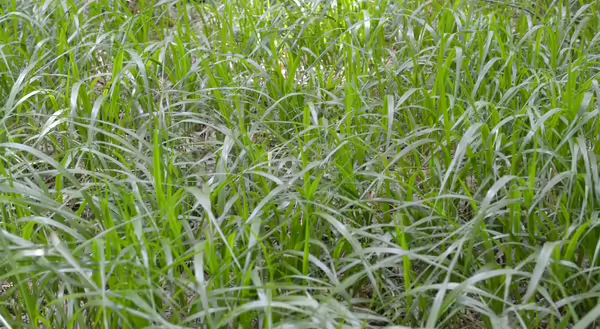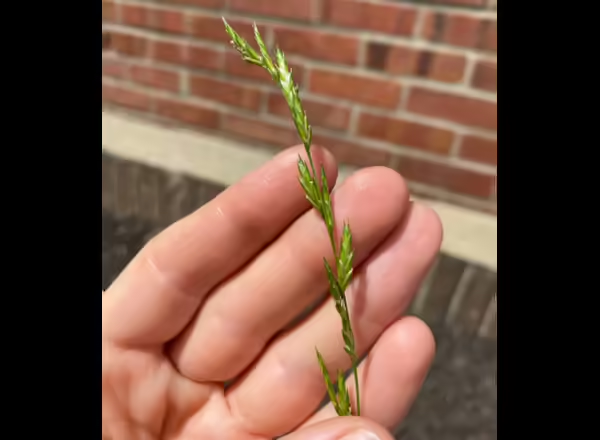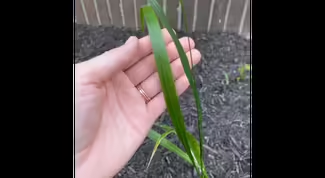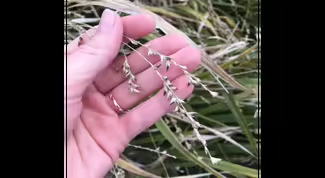
The first time I saw Beakgrass was at the Missouri Botanic Garden in a parking median. I was struck by the attractive mass of this grass, which was bowed to one side from the weight of its seed heads. I mentally filed this grass away as one that I wanted to make sure I added to my landscape one day.
This spring I was looking for a somewhat shade tolerant groundcover for an area in my garden, and I was excited to fill in among my flowering plants with Beakgrass.
Now in mid-July my beakgrasses are flowering! Let’s explore what this grass looks like and why I think it’s a great choice for a shadier spot.
Two species of beakgrass
There are two species of beakgrass in Illinois. This is a recent change, as one of the species used to be considered a variety of the other. Beakgrass, also called Beakgrain or Obovate Beakgrain, Diarrhena obovata, is one of the species found in Illinois. It can be found throughout most counties in Illinois. American Beakgrass, also called American Beakgrain, Diarrhena americana, is restricted to a few of the southernmost counties of the Illinois and a few scattered counties in the northwest corner. The two species are quite difficult to tell apart, so we’ll just refer to them as a group.
Growing beakgrasses
The beakgrasses grow in wooded areas, preferring part shade. You should keep this in mind when planting in your home garden to try to match their preferred growing conditions. They spread through rhizomes, so you can plant several clumps and let them fill in over time. I like to do this by planting in groups of 3 or 5 plants spaced about a foot apart, and then allowing them to fill in over the next couple of years.

Identifying beakgrasses
The leaves of beakgrasses usually stay under a foot tall and they are twisted at their bases so that they show their shiny undersides. The midrib, or vein, of the leaves is off-center.
When in bloom, beakgrasses produce a raceme inflorescence, which means the spikelets (flowering units of a grass), are grouped on small stalks that attach to the central stem. The flowering stems can grow about 1-2 feet tall. Taking a look at the spikelets reveals where the name Beakgrass came from, since the spikelets are pointed and resemble bird beaks. The spikelets turn an attractive straw to golden color in the fall.
I’ve seen both species for sale from native plant nurseries. Would you consider adding beakgrass to your garden?
Need a refresher on grass identification terms? Check out this blog post!
Thank you for reading!
Never miss a new post! Subscribe to our email list to get updates each time a new post is available.
Give us feedback! How helpful was this information (click one): Very helpful | Somewhat helpful | Not very helpful
ABOUT THE AUTHOR: Erin Garrett is a Natural Resources, Environment, and Energy Educator for University of Illinois Extension serving Alexander, Johnson, Massac, Pulaski, and Union counties. Erin develops and delivers high impact programming to adults and youth to help them develop an appreciation for natural resources and to empower them to make small changes to positively impact the environment. Erin’s programming focuses on why homeowners should consider choosing native plants, how to support native pollinators, how to identify grasses, how to identify and manage invasive species, and developing an appreciation for prairie ecosystems.


